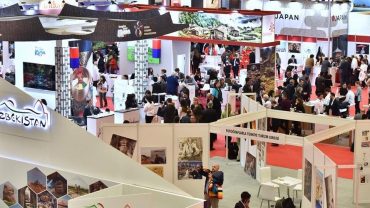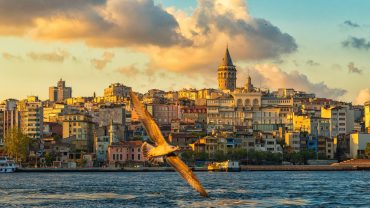Sinop, historically known as Sinope (Greek: Σινώπη), is a city with a population of 36,734 on the isthmus of İnce Burun (İnceburun, Cape Ince), near Cape Sinope (Sinop Burnu, Boztepe Cape, Boztepe Burnu) which is situated on the most northern edge of the Turkish side of the Black Sea coast, in the ancient region of Paphlagonia, in modern-day northern Turkey. The city serves as the capital of Sinop Province.
Economy
As of 1920, Sinop was producing embroidered cotton cloth. They also were known for boatbuilding. The boats produced in Sinop were described by a British observer as being of “primitive design but sound workmanship.” Sinop is currently slated to be the site of the Sinop Nuclear Power Plant, a $15.8 billion nuclear power plant being developed by Elektrik Üretim, Engie, Mitsubishi Heavy Industries and Itochu. The plant will consist of four reactors, with construction to begin as early as 2017 and completion by 2028.
Cultural and other attractions
Visitor attraction places in Sinop are:
Pasha Bastion (Turkish: Paşa Tabyası) is a half-moon coastal bastion, a semi-circular fortification, situated southeast of Sinop Peninsula. It was constructed to protect the city against attacks coming from the Black Sea during the Russo-Turkish War, Crimean War (1853–1856). It features an artillery battery of eleven cannons, an arsenal and basement. Today, it is used as a place for refreshments premise. Historic Water Tunnel (Turkish: Tarihi Su Kanalı) is an ancient underground water supply channel situated at Sülüklü Göl (literally: Lake of Leeches. Dug in rock, it is about 230 m (750 ft) long and has a clearance of 1.50 m (4.9 ft). There exists a 20–30 m (66–98 ft) high cylindrical ventilation shaft of 1.50 m (4.9 ft) diameter. Balatlar Church (Turkish: Balatlar Kilisesi) is a ruined church from the Byzantine Empire period. It is partly preserved as only the chapel vault is in undamaged condition while other parts of the church have no roof any more. Fresco paintings on the chapel’s ceiling and on the nave walls are still intact. Serapeum is a ruined temple dedicated to the combined Hellenistic-Ancient Egyptian deity Serapis, situated in the southwestern corner in the yard of Sinop Archaeological Museum. Alaaddin Mosque is a 13th-century mosque of Seljuk architecture named after its endower Sultan Alaaddin Kayqubad I (1188–1237).
Pervane Medrese is a former Islamic religious school, which was closed down after the proclamation of the Republic. The 13th-century building was used as a depot for archaeological artifacts and ethnographic items from 1932 on, and served as a museum between 1941 and 1970. It hosts souvenir shops today. Sinop Fortress (Turkish: Sinop Kalesi) is a fortification surrounding the peninsula and the isthmus of Sinop. It was built initially by migrants from Miletus in the 8th century BC. The fortress underwent reparation and expansion to its current extent during the reign of King Mithridates IV of Pontus in the 2nd century BC after its destruction by the Cimmerians in the 7th century BC. Some parts of the fortress, especially the north walls, are ruined. Sinop Fortress Prison (Turkish: Sinop Tarihi Cezaevi) is a defunct state prison situated inside the Sinop Fortress. Served between 1887 and 1997, the prison rose to fame when it featured in many literature works of notable aıthors, who were inmates of the prison for political reasons.
It became also a shooting set for many movies and television series. It is a prison museum today. Sinop Archaeological Museum (Turkish: Sinop Arkeoloji Müzesi) is a 1941-established archaeological museum exhibiting artifacts dating back to Early Bronze Age and from the Hellenistic, Roman, Byzantine, Seljuk and Ottoman periods as well. Sinop Ethnographic Museum (Turkish: Sinop Etnografya Müzesi) is a museum of ethnographic exhibits belonging to the cultural history of the region.
It is situated in a large 18th-century mansion. Statue of Diogenes (Turkish: Diyojen Heykeli) is a monument to the Ancient Greek philosopher Diogenes of Sinope born in Sinop in about 412 BC.





Comment (0)